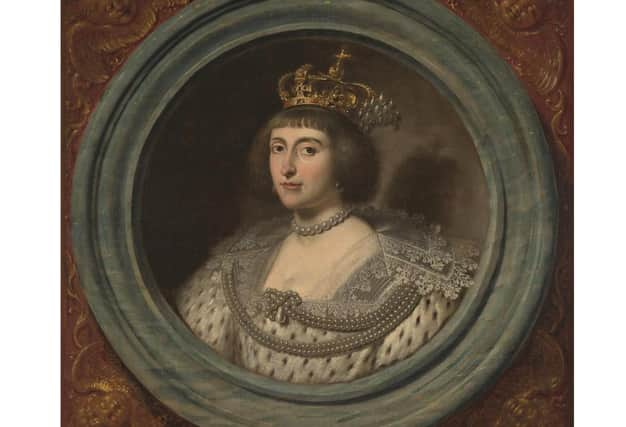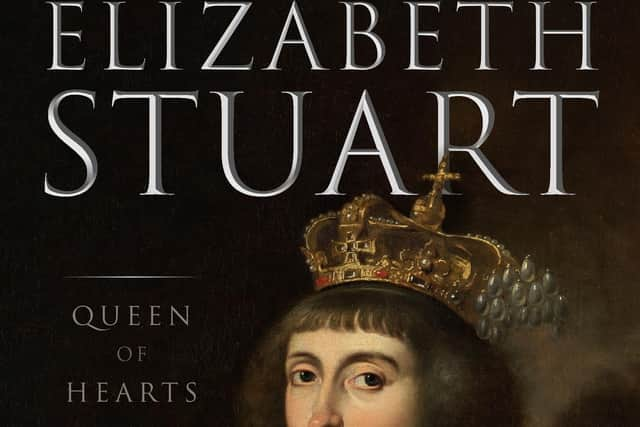Book review: Elizabeth Stuart, Queen Of Hearts, by Nadine Akkerman


When James the Sixth, King of Scots travelled south to be proclaimed King of England in 1603, he brought with him two very valuable assets. He arrived with his firstborn son, Prince Henry, and his daughter, the Princess Elizabeth. Britain was not just getting a new king, but a dynasty; something which had troubled the courtiers at the end of the days of the Virgin Queen.
Akkerman’s book is academic in that it is rooted in archival research, and overturns some rather blasé comments made in the past about Elizabeth Stuart. It is at the same time a romp of a book, with pan-European politics and very specific details both lodging in the reader’s brain. She ends by noting that, even after her death in 1662, Elizabeth would still influence the continent’s affairs – her grandson would be George I – although she also captures that she was a far more feisty character than German George.
Advertisement
Hide AdAs Akkerman puts it: “By the time of her death, aged 65, Elizabeth had lost a kingdom, the Upper Palatinate, several wars, three infant sisters, three brothers (one as a baby)” – and indeed her brother, Charles I, was beheaded – “a husband, six children, and several palaces. She had also outlived all the ambassadors and generals who had ever supported or opposed her”. It might seem sexist to describe her as formidable, but she was. She was also sarcastic, shrewd, unforgiving and, a rarity in the period, seems to have genuinely loved her husband, Frederick the Elector of Palatine, who then became Frederick V of Bohemia, albeit for a single year.


As Akkerman observes at the outset, Elizabeth Stuart is often referred to as “the Winter Queen”. In a way this is snide. Her husband was nicknamed “the Winter King” after his defeat at the Battle of the White Mountain against the Holy Roman Empire, which ended his brief tenure in Bohemia. The more common epithet was “the Queen of Hearts”. From the outset, there was a propaganda machine around Elizabeth, although she was a pawn who knew she was a pawn – and a pawn can reach the other side of the board and become a queen.
James, with, I think, a genuine desire to be the “eirenic” or peaceful ruler had to play a precarious game. With an heir and a spare and a daughter, he could build strategic links. One might be married off to a crowned head of the Protestant Union, the other to the Catholic League, and the balance of power be maintained. Elizabeth, after many suitors, was bequeathed, as it were, to Frederick.
Their marriage was a piece of clever ostentation. Firstly, the fact that her godmother was Elizabeth I made an obvious connection: Elizabeth Stuart was Elizabeth Tudor born again, and many of the poems refer to her as a phoenix. Then she was even styled to resemble the late English queen. A son et lumière for the wedding was based on Spenser’s The Faerie Queene. She even practiced imitating her godmother’s signature. Finally, she encouraged an idea of her as Diana – mostly because she loved hunting, but also because Diana was a Virgin goddess.
Her life in Bohemia and latterly the Hague was not as spectacular. Akkerman is astute on how in the early Modern period, women could wield power through subtle means. Previous historians have written her off as something of a flibbertigibbet, since she liked jewels, masques, field sports and lavish tapestries and feasts. One banquet comprised “420 pounds of sheep, 19 lambs, 263 pounds of veal, 30 pounds of beef, and 27 pounds of salted meat… 24 turkeys, 18 peacocks, 282 doves, 120 capons, 178 chicks, 78 young and 48 mature rabbits, 122 quails, 12 geese, 60 spring chickens, one hare and twelve sparrows, which were partly used in pies”. Power was show and show was power, even though Elizabeth was rather frugal in her way. She insisted that jewels she had pawned be redeemed and debts paid; unlike her regal brother. But as a court in exile and latterly a widow, the finance and the face rarely married up. (At one point she owed £50,000 to a fishmonger, a grocer, a haberdasher, three butchers, a baker and a candlestick maker).
Elizabeth maintained a wide network of informants, and certainly had more information than her brother on the shifting alliances of Europe. Nor, does it seem, would she have created the sort of omnishambles Charles I managed to make (alienating the Scots, profligate spending, acting like an idiot abroad, relying on unreliable advisors, swayed by a vain wife… draw your own conclusions).
Advertisement
Hide AdPerhaps the saddest part of the book is her will. One daughter converted to Catholicism and became a nun, which went against her religious sympathies, and was therefore excluded. But Elizabeth hung on and was clever, even within the constrictions of the day.
This excellent book sheds light on a part of Scottish history – and European history – that is too little known. It is also a reclamation of a figure of genuine significance and strength. You will not get the new George RR Martin under the tree this year, but this has the intrigue and horror of Westeros. It even has a champion with a prosthetic silver arm. And nowhere in George RR Martin is there a monarch fleeing a capital city with a carriage full of monkeys.
Advertisement
Hide AdElizabeth Stuart: Queen Of Hearts, by Nadine Akkerman, Oxford University Press, £20
A message from the Editor
Thank you for reading this article. We're more reliant on your support than ever as the shift in consumer habits brought about by coronavirus impacts our advertisers.
If you haven't already, please consider supporting our trusted, fact-checked journalism by taking out a digital subscription at https://www.scotsman.com/subscriptions